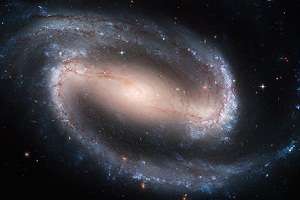TheSkyNet acquires new target as astronomers reach for the stars

A program using the computers of everyday people to process data from signals from distant galaxies has marked its second anniversary and has bigger plans for its future.
TheSkyNet recently marked its re-launch with a new research project and an aim to increase its members from the current 11,000 users to 50,000 with an average of 15,000 actively contributing at any time by the end of next year.
Launched in September 2011, theSkyNet is a community computing project dedicated to astronomy, initiated by the International Centre of Radio Astronomy Research (ICRAR).
The program uses the idle processing power of thousands of computers connected to the Internet, simulating a powerful single machine that can process data collected by telescopes around the world.
ICRAR researcher in charge of theSkyNet Associate Professor Kevin Vinsen says as part of the re-launch the website was extensively redesigned to include popular gaming features including the ability to earn credits for the amount of data that member's process.
The more data members process, the faster they climb up the rankings or leader board and more trophies they receive, and they can also join alliances to help them achieve their goals faster.
As an extra incentive the website is adding images of the galaxies they have processed, which users can download to show their participation.
Assoc Prof Vinson says people from 80 countries had signed up to theSkyNet since its inception and 40 to 50 people a day were joining.
As part of the re-launch, theSkyNet also launched a new scientific project – theSkyNet POGS, which started testing almost a year ago.
POGS processes data gathered by various telescopes around the globe to measure the properties of thousands of galaxies, such as stellar mass and star formation rate.
It is also the first ever Australian project to be available to the public on the popular distributed computing software BOINC.
A/Prof Vinsen says users would now, through theSkyNet POGS, view their stats as well as images of galaxies their computer helped process.
"TheSkyNet POGS has already processed an impressive 7000 galaxies since it started testing and as the number of computers in the project grows with its official integration into the website, the team behind it aims to process more than 100,000 galaxies," he says.
He says to process the data from those 100,000 galaxies would normally take a decade but he predicts it could take less than three years with the take-up of new users.
Provided by Science Network WA


















